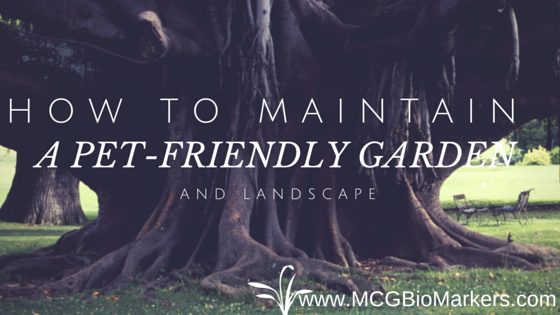
We all love our pets, and the last thing we want is to expose them to dangerous pesticides and chemicals. However, this is happening without our knowledge. As much we love pets, we appreciate beautiful gardens and landscapes. What we fail to realize is that the gardens and landscapes harbor numerous poisons and dangers due to the tools and pesticides we use to grow plants and eliminate unwanted insects. Non-toxic lawns are crucial especially for dogs because they like playing outside while experimenting. Thus, they may chew or lick plants and soil that contains harmful toxins. The good news is that this menace can be avoided by following simple principles such as;
Fertilizing soil with mulch and compost
We all believe that fertilizers are best for making the soil fertile. This is a fact, but, fertilizers are made from chemicals that are neither good for human nor animal consumption. Thus, the need to switch to compost and mulch to make garden soil as fertile as you would want. Compost is made from kitchen wastes such as peelings and food remains. Thus, easy and affordable to make. However, be cautious because composts grow mold that causes liver failure and gastrointestinal complications if ingested. To promote healthy lawns, consider mulch mowing and leave the clippings on the lawn.
Plan how you plant
Planning what to plant where can reduce pest and disease problems and subsequently, the need for toxic chemicals. Go for plants that are native to your area because they can grow without relying on boosters such as fertilizers and pesticides. Moreover, consider your garden site. If it’s sunny, choose sun loving plants and moisture dependent plants in moist areas. Good plant maintenance like watering and pruning can ward off pests. Research on pet poisonous plants prevent mistakes and tragedies that could have been avoided.
Use old-fashioned methods to fight pests
Pests are hard to eradicate without using harmful pesticides and there are no known eco-friendly pesticides. However, since pests have been around since time immemorial and pesticides are a human invention, there must be ways that were used to fight pests before the invention was introduced. This includes using tools to fight pests. Bugs were squashed not sprayed, and weeds were pulled out by hand. Moreover, you can resort to using natural products like spraying mineral or dormant oil to exterminate pest eggs and insects. Clove oil also kills weeds. Nonetheless, it would be easier to uproot one problem causing plant than to spray the entire garden.
Bottom Line
Creating a nontoxic environment is not only good for pets but also for humans. If the toxins are harmful to pets, imagine what they would do to humans if ingested directly or indirectly. If you must use fertilizers, go for eco-friendly fertilizers. Always store all gardening products in a safe place that is out of reach for the pets. Pets are experimental and we all know what dogs can do when they find a container they can play with. Many pet dogs are dying of preventable cancers. Take control and protect your pet as soon as now.
For more information on eco-friendly gardening choices, go to www.mcgbiomarkers.com


